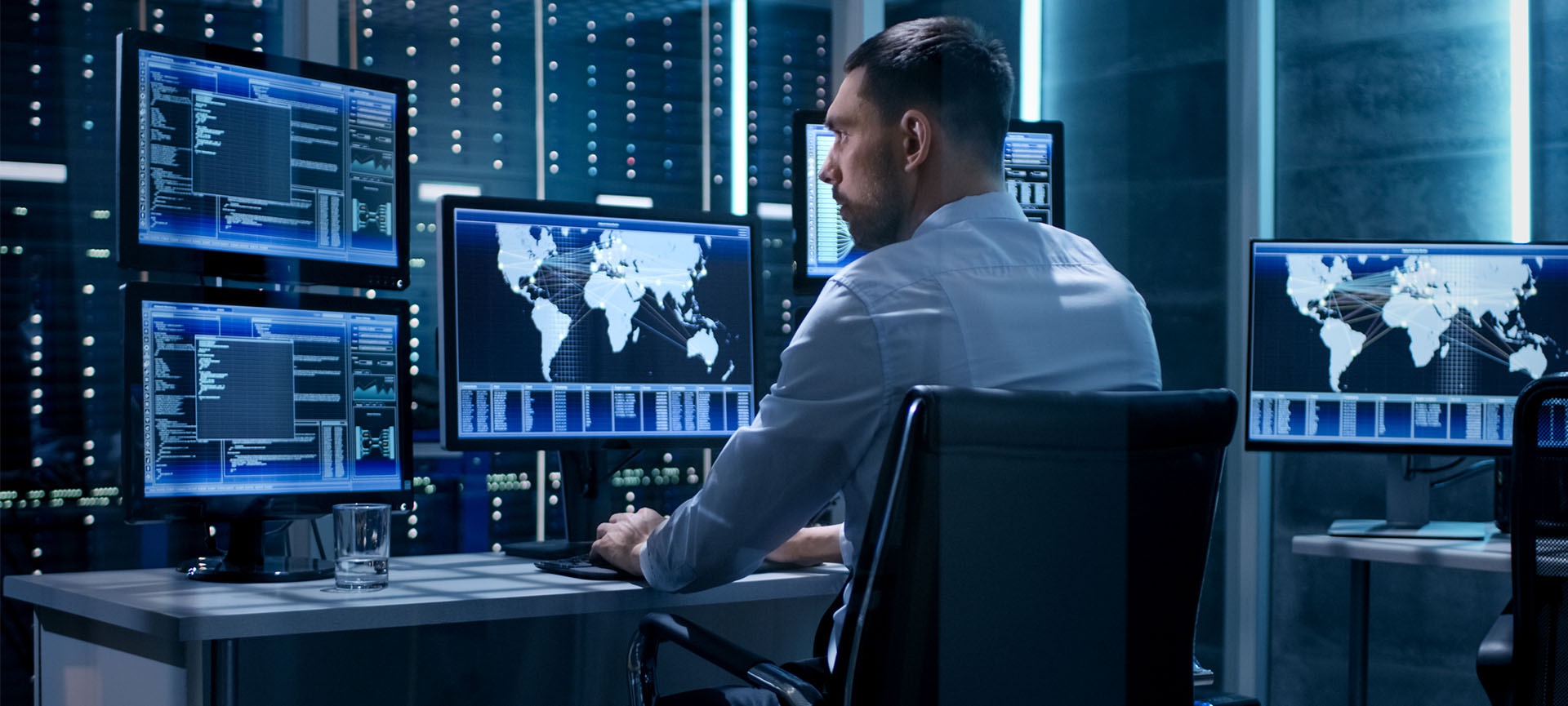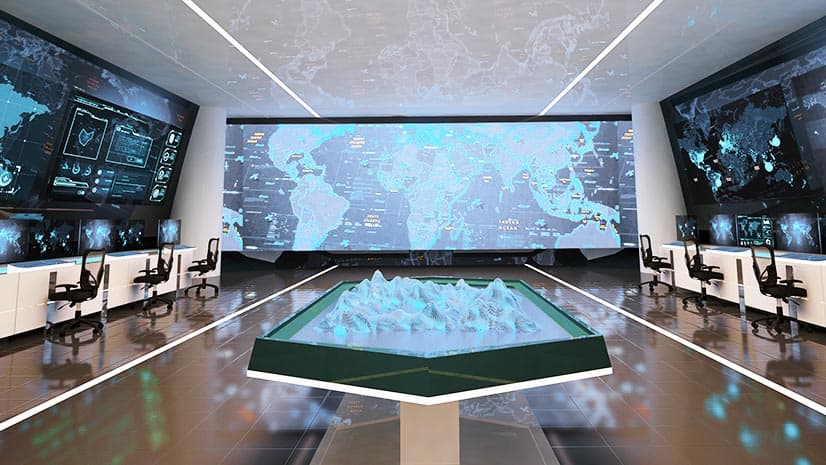Corporate Security Demystified: Reinforcing Your Organization Defenses
From Cybersecurity to Physical Actions: Enhancing Corporate Safety And Security in a Changing Globe
By integrating the strengths of both cybersecurity and physical protection, firms can produce an extensive protection method that addresses the diverse array of dangers they encounter. In this discussion, we will explore the changing threat landscape, the need to incorporate cybersecurity and physical protection, the implementation of multi-factor verification actions, the relevance of worker understanding and training, and the adaptation of security actions for remote labor forces. By checking out these crucial areas, we will acquire beneficial understandings right into how companies can reinforce their business safety and security in an ever-changing world.
Comprehending the Altering Threat Landscape
The evolving nature of the modern-day globe demands a detailed understanding of the altering hazard landscape for efficient corporate safety and security. In today's interconnected and digital age, threats to company safety and security have become more intricate and advanced. As technology breakthroughs and businesses come to be increasingly dependent on digital framework, the potential for cyberattacks, information violations, and various other safety and security breaches has actually dramatically raised. It is crucial for companies to stay educated and adjust their safety measures to attend to these evolving dangers.
One key aspect of understanding the changing danger landscape is recognizing the various types of dangers that companies face. Cybercriminals are regularly establishing brand-new methods to manipulate vulnerabilities in computer systems and networks. These threats can range from malware and ransomware attacks to phishing scams and social engineering tactics. In addition, physical threats such as theft, criminal damage, and company reconnaissance remain common problems for businesses.
Tracking and analyzing the risk landscape is necessary in order to determine potential risks and susceptabilities. This includes remaining updated on the most up to date cybersecurity patterns, evaluating threat intelligence records, and carrying out regular threat evaluations. By understanding the transforming danger landscape, organizations can proactively implement appropriate security actions to alleviate risks and protect their properties, online reputation, and stakeholders.
Integrating Cybersecurity and Physical Safety
Incorporating cybersecurity and physical safety is vital for extensive company security in today's interconnected and digital landscape. As companies significantly depend on technology and interconnected systems, the borders between physical and cyber dangers are coming to be blurred. To efficiently guard against these dangers, a holistic method that combines both cybersecurity and physical safety and security actions is crucial.
Cybersecurity concentrates on shielding digital properties, such as systems, data, and networks, from unapproved access, interruption, and theft. Physical protection, on the other hand, includes actions to protect physical assets, people, and centers from susceptabilities and threats. By integrating these two domain names, companies can deal with vulnerabilities and hazards from both physical and electronic angles, therefore enhancing their general protection posture.
The combination of these 2 disciplines permits an extra extensive understanding of safety threats and makes it possible for a unified response to cases. For example, physical access controls can be improved by integrating them with cybersecurity methods, such as two-factor verification or biometric recognition. Cybersecurity actions can be complemented by physical security measures, such as security cams, alarms, and protected gain access to points.

Executing Multi-Factor Verification Steps
As organizations increasingly prioritize extensive safety and security actions, one efficient strategy is the implementation of multi-factor verification steps. Multi-factor verification (MFA) is a safety and security technique that requires users to supply numerous forms of identification to access a system or application. This method includes an extra layer of security by integrating something the user recognizes, such as a password, with something they have, like a fingerprint or a safety token.
By implementing MFA, companies can significantly improve their protection position - corporate security. Conventional password-based verification has its constraints, as passwords can be easily endangered or failed to remember. MFA reduces these dangers by including an added verification factor, making it much more challenging for unauthorized people to obtain accessibility to delicate details
There are a number of kinds of multi-factor verification techniques readily available, including biometric verification, SMS-based confirmation codes, and hardware tokens. Organizations visit the site require to examine their details needs and select the most proper MFA service for their demands.
Nevertheless, the implementation of MFA ought to be thoroughly planned and carried out. It is essential to strike an equilibrium between safety and security and usability to stop user aggravation and resistance. Organizations should additionally consider potential compatibility issues and give appropriate training and support to make sure a smooth shift.
Enhancing Employee Recognition and Training
To strengthen business safety, companies must focus on improving employee awareness and training. Lots of protection violations take place due to human error or lack of understanding.
Reliable worker awareness and training programs ought to cover a large range of subjects, consisting of data protection, phishing attacks, social engineering, password hygiene, and physical protection steps. These programs ought to be tailored to the details needs and obligations of various worker functions within the organization. Normal training sessions, simulations, and workshops can assist workers develop the required abilities and this post expertise to recognize and react to protection hazards effectively.
Furthermore, organizations should urge a culture of security recognition and give continuous updates and reminders to maintain workers educated regarding the newest threats and reduction methods. This can be done via internal interaction channels, such as e-newsletters, intranet websites, and email campaigns. By cultivating a security-conscious labor force, organizations can significantly lower the chance of safety incidents and safeguard their beneficial possessions from unapproved access or concession.

Adapting Safety And Security Measures for Remote Labor Force
Adapting business protection actions to accommodate a remote workforce is crucial in guaranteeing the security of delicate details and assets (corporate security). With the increasing trend of remote work, organizations have to implement appropriate safety and security steps to alleviate the dangers linked with this brand-new means of functioning
One critical facet of adapting safety and security steps for remote work is establishing protected interaction channels. Encrypted messaging platforms and virtual private networks (VPNs) can aid safeguard sensitive information and prevent unauthorized gain access to. Additionally, organizations ought to impose the use of solid passwords and multi-factor verification to boost the safety and security of remote access.
Another vital consideration is the execution of protected remote gain access to solutions. This includes supplying staff members with protected access to company sources and information through online desktop infrastructure (VDI), remote desktop computer procedures (RDP), or cloud-based services. These innovations make sure that sensitive information stays secured while allowing employees to execute their functions effectively.

Finally, comprehensive safety and i loved this security understanding training is crucial for remote employees. Training sessions should cover ideal practices for securely accessing and dealing with delicate info, determining and reporting phishing efforts, and keeping the total cybersecurity health.
Final Thought
In final thought, as the threat landscape proceeds to develop, it is vital for organizations to reinforce their safety determines both in the cyber and physical domains. Integrating cybersecurity and physical protection, applying multi-factor authentication measures, and boosting worker understanding and training are essential actions towards attaining durable company safety and security.
In this conversation, we will discover the altering danger landscape, the need to incorporate cybersecurity and physical safety and security, the execution of multi-factor authentication steps, the significance of staff member understanding and training, and the adaptation of safety measures for remote workforces. Cybersecurity actions can be matched by physical protection steps, such as security video cameras, alarm systems, and protected accessibility points.
As companies significantly prioritize thorough security steps, one reliable approach is the execution of multi-factor authentication procedures.In verdict, as the hazard landscape continues to advance, it is essential for companies to reinforce their security measures both in the cyber and physical domains. Incorporating cybersecurity and physical protection, executing multi-factor authentication procedures, and boosting worker awareness and training are vital steps in the direction of achieving durable business protection.